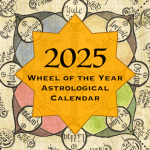As I develop some new middle-elementary curriculum materials, I’ve been looking at myths and religious narratives for deities who do not have a binary, male-or-female, gender.
From Genesis
The most familiar example of a non-binary gender deity — but an example we mostly ignore — is in one of the two stories of the creation of humankind in the book of Genesis. The more familiar Genesis story of the creation of humankind comes from the second chapter of Genesis, where God creates a male human, then puts the male human to sleep, takes a rib, and makes a woman. However, as feminists began pointing out back in the 1970s, there’s another story about how humans were created in the first chapter of Genesis:
So God created humankind in his image, in the image of God he created them; male and female he created them. (Genesis 1:27, NRSV)
Commenting on this passage, Susan Niditch, professor of religion at Amherst College, says:
“For feminist readers of scriptures, no more interesting and telegraphic comment exists on the nature of God. The male aspect and the female aspect implicitly are part of the first human and a reflection of the creator.” (Women’s Bible Commentary, ed. Carol A. Newsom and Sharon H. Ringe, Westminster/John Know Press, 1992, p. 13)
While agreeing with Niditch, I would add that this passage implies to me that the God of Genesis 1 cannot be reduced to a single binary gender.
Navajo Creation Myth
The Navajo deity Turquoise Boy is of non-binary gender in a different way. In the Dine Bahane, the Navajo creation myth, when the humans get to the Third World, the men decide to live apart from the women, and cross a river in order to separate themselves. But the men take Turquoise Boy with them, because he is able to do the women’s work of grinding corn, etc., which the men ordinarily wouldn’t be able to do. (See: Aileen O’Bryan, The Dîné: Origin Myths of the Navaho Indians, Bulletin 163, the Bureau of American Ethnology, Smithsonian Institution, 1956.) White Shell Girl is also a non-binary gender deity; the narrative refers to her as being intersex, or in the O”Bryan translation, a hermaphrodite.
Turquoise Boy: Origins of the Two Spirits (Dine’) https://t.co/kSo7QLdGbO @CharlieBallard #INDIGENOUS #TAIRP pic.twitter.com/XIfGyTz70E
— Indigenous (@AmericanIndian8) February 24, 2016
Chinese Mythology
 Turning to Chinese myths and religious narratives, Lan Caihe (Lan Ts’ai-ho), one of the Eight Immortals of Taoism, is ambiguously gendered. According to folklorist E. T. C. Werner:
Turning to Chinese myths and religious narratives, Lan Caihe (Lan Ts’ai-ho), one of the Eight Immortals of Taoism, is ambiguously gendered. According to folklorist E. T. C. Werner:
“Lan Ts’ai-ho is variously stated to have been a woman and an hermaphrodite…. According to the Hsiu hsiang Pa Hsien tung yu chi, … though he was a man, he could not understand how to be a man (which is perhaps the reason why he has been supposed to be a woman).”(Myths and Legends of China, E. T. C. Werner, London: George Harrap & Co., 1922, p. 293)
 There are many other deities with ambiguous or non-binary gender, including perhaps most famously the ancient Greek deity Hermaphroditus. What I find particularly interesting is that non-binary gender plays out in many different ways in these various myths and religious narratives. I want to say that there is a spectrum of gender choices, but I think saying that imposes my early twenty-first century Western cultural framework on other cultures. Better to say that gender has been interpreted in many ways in different religious traditions.
There are many other deities with ambiguous or non-binary gender, including perhaps most famously the ancient Greek deity Hermaphroditus. What I find particularly interesting is that non-binary gender plays out in many different ways in these various myths and religious narratives. I want to say that there is a spectrum of gender choices, but I think saying that imposes my early twenty-first century Western cultural framework on other cultures. Better to say that gender has been interpreted in many ways in different religious traditions.


















